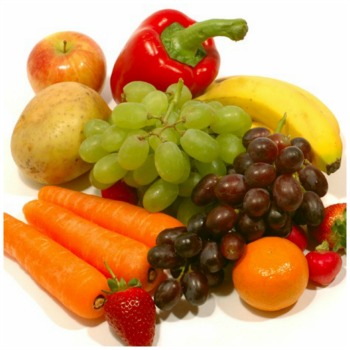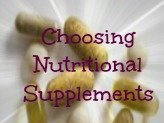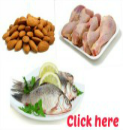Food Choices- How to Make Healthier Choices
Here are some tips for making healthy food choices. Have you realized that fast food is cheap, readily available and very tasty. Unfortunately, fast foods can lead to health problems when eaten on regular basis. However you can still make healthy choices that will guarantee you health and well being.
This page guides you on how to make healthy choices when selecting and preparing grains, vegetables, milk, meat, beans, fats, and other foods.
Grains
Have you been looking for low fat, nutritious foods that satisfy your hunger? Whole grain foods are a great choice.
Would you be willing to eat more whole grain foods if they would help reduce your risk for heart disease and cancer? If you are like most people in recent grain related studies, you would.
Make sure at least half of your grain food choices are whole grain. Examples of grain foods are cereals, breads, crackers, and pasta. Whole grains haven’t lost any fiber or nutrients from processing. They help meet your nutrient needs, as do foods made from enriched grains.
Vegetables
Choose a variety of vegetables, including: dark green vegetables, such as broccoli, kale, and collard greens; orange vegetables, such as carrots, sweet potatoes, and pumpkin;
dry beans and peas, such as pinto beans, kidney beans, black beans, garbanzo beans, split peas, and lentils.
Milk, cheese, and yogurt
If you want to make healthy food choices on these areas, choose low-fat or fat-free milk, cheese, and yogurt. If you have lactose intolerance, you can still get calcium from reduced-lactose milk, other milk products, and non-dairy sources of calcium.
Many people with lactose intolerance can eat small amounts of milk, cheese, yogurt, and other milk products without discomfort. Or you can take the enzyme lactase in the form of pills or liquid drops before you eat dairy products.
If you can’t or don’t consume milk, cheese, or yogurt, choose other sources of calcium, such as calcium-fortified soy drinks, calcium-fortified tofu, collard greens, or fortified ready-to-eat cereals.
How to Make Healthier Food Choices
Fruits
For most of your fruit servings, choose a variety of fruits (without added sugars) in various forms, such as fresh, frozen, canned, or dried.
For example, try fresh apples, frozen blueberries, canned peaches, or dried apricots.
Look for canned fruit packed in water or 100 percent fruit juice, instead of syrup.
Go easy on fruit juice because it lacks fiber. If you do have fruit juice, make sure it’s 100 percent fruit juice.
Fats
Everyone needs some fat as part of healthy food choices. Fats should provide about 20 to 35 percent of your daily calories. Even though some fats are heart-healthy, they are still high in calories. Limit serving sizes of all fats.
Choose heart-healthy fats: foods with monounsaturated fats and polyunsaturated fatty acids, such as salmon or corn oil. Most of the fat you eat should come from vegetable oils, nuts, and fish. For example, cook with canola oil. Snack on nuts. Have fish for dinner.
Limit how often you have heart-harmful fats: foods with saturated fat and cholesterol, such as bacon, whole milk, and foods with hydrogenated or partially hydrogenated fats.
Limit how often you have fats that are solid at room temperature and the foods that contain them, such as fatty cuts of meat. If you eat foods with heart-harmful fats, limit how much you eat of them.
How to Make Healthy Food Choices When Buying Meat & other Protein Foods
Choose low-fat or lean meats and poultry, such as chicken without the skin, or top round (a lean cut of beef).
Prepare meat, fish, and poultry using low-fat cooking methods, such as baking, broiling, or grilling.
Vary your protein food choices. Try fish, beans, peas, nuts, and seeds. For example, try making a main dish without meat for dinner, such as pasta with beans, at least once a week.
Salt (sodium)
Limit your sodium to less than 2300 milligrams each day. Choose foods with little sodium. Fruits, vegetables, dry beans and peas, and fresh meat, poultry, and fish are naturally low in sodium. You can also check the Nutrition Facts label on food packages. (Note: Food labels use the word “sodium” instead of salt.)
Many processed foods are high in sodium. Try to cut back on how much salt you add while you cook and at the table.
Added sugars
Limit the amount of foods and drinks you consume with added sugars, such as cakes, cookies, regular soft drinks, and candy. Check the Nutrition Facts label to find added sugars.
Added sugars will be shown in the list of ingredients. The Nutrition Facts label lists the total sugars content. However, the total includes naturally occurring sugar, such as the sugar in fruit, plus added sugar.
I hope these healthy food choices tips will help you to make the right decision on which foods you should eat more often, and the ones you need to eat less often.
Food Related Articles









New! Comments
Have your say about what you just read! Leave me a comment in the box below.